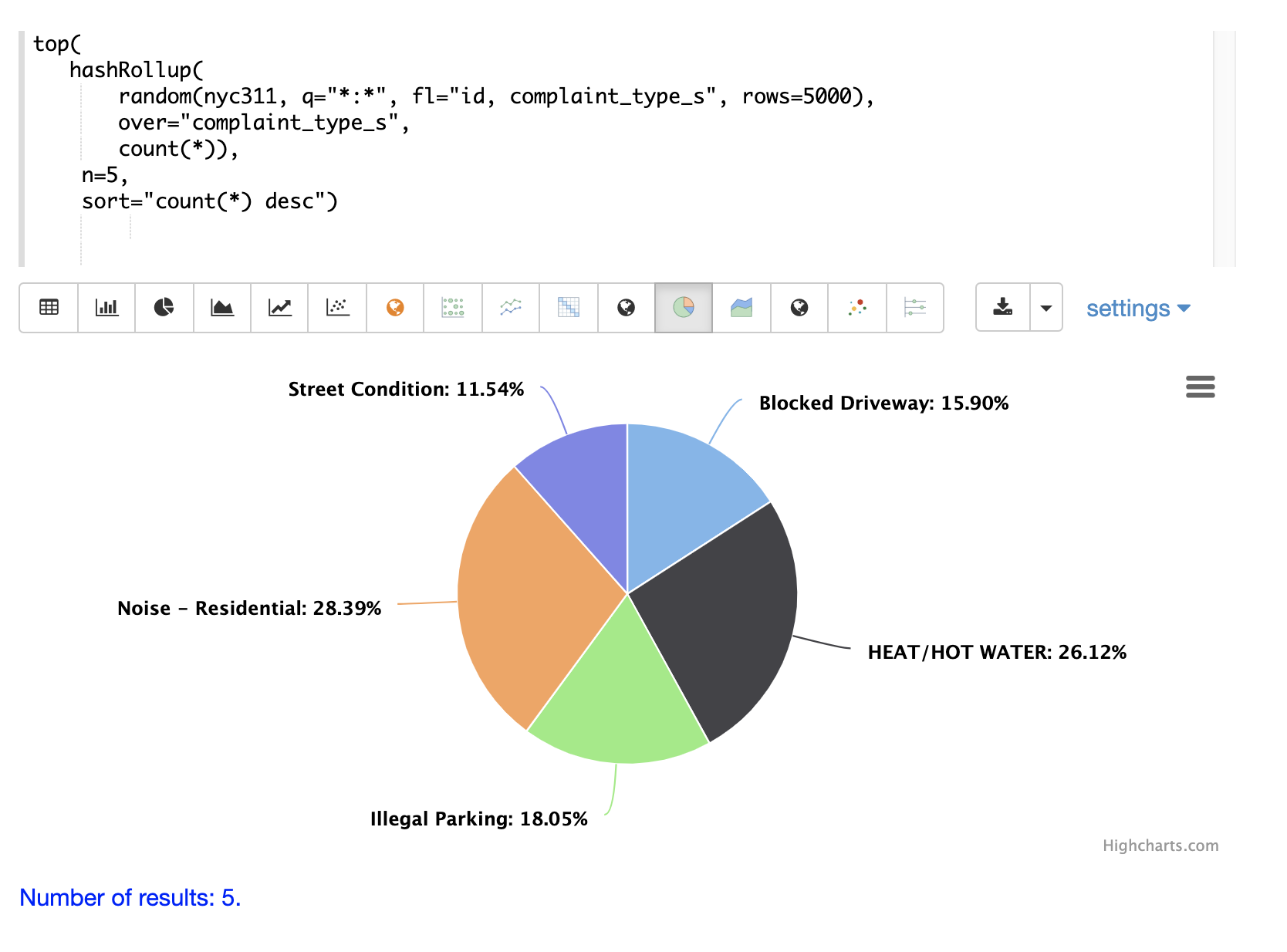Transforming Data
Streaming expressions provides a powerful set of functions for transforming result sets. This section of the user guide provides an overview of useful transformations applied to result sets.
Selecting and Adding Fields
The select function wraps another streaming expression can perform the following operations on each tuple
in the stream:
Select a subset of fields
Map fields to new names
Compute new fields
Below is an example showing the select function wrapping a search function
and mapping fields to new field names. The recNum function is a math expression
which simply returns the current record number of the tuple. The select expression can call
any math expression to compute new values.
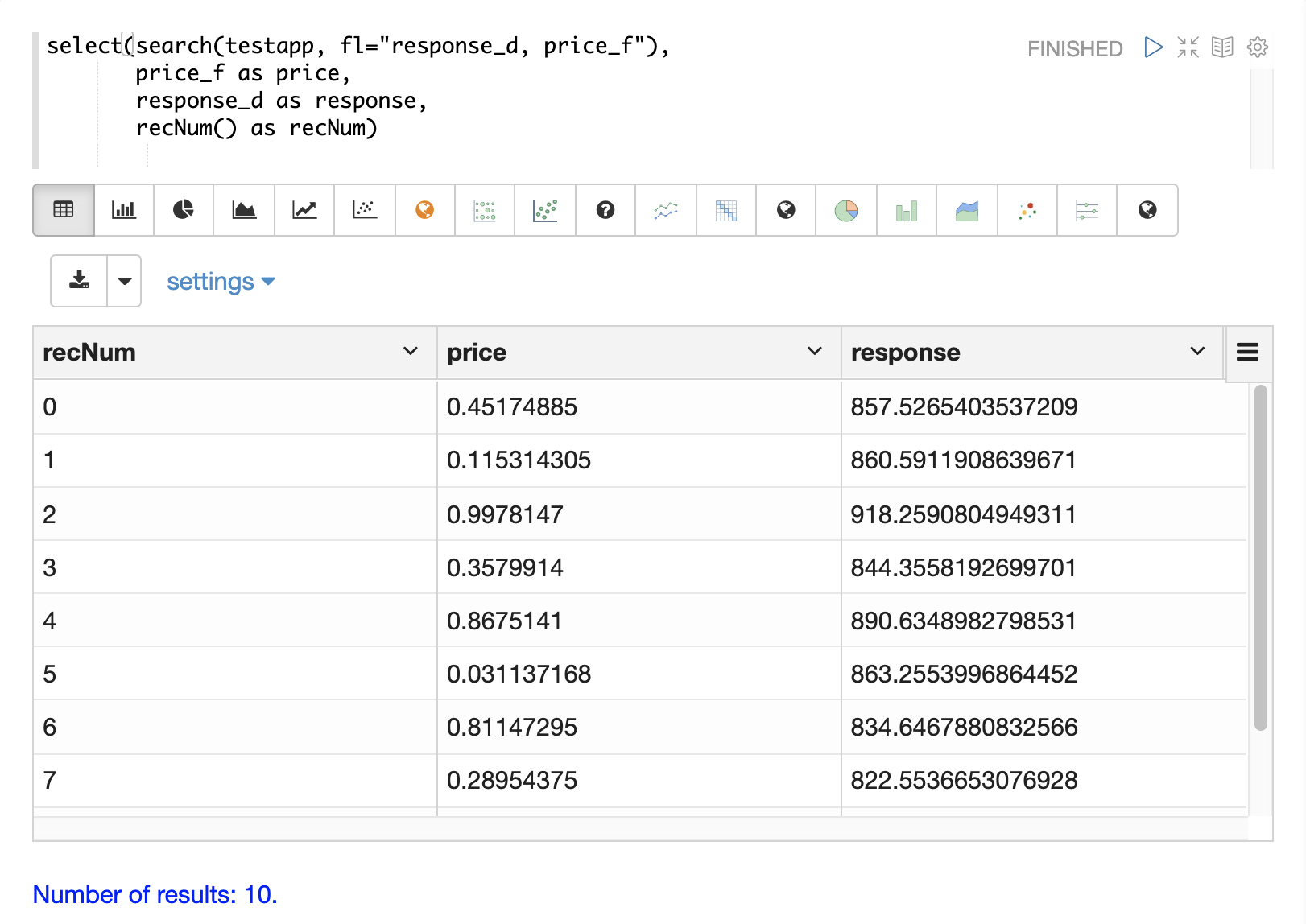
Below is an example using the div function to compute a new field
from two existing fields:
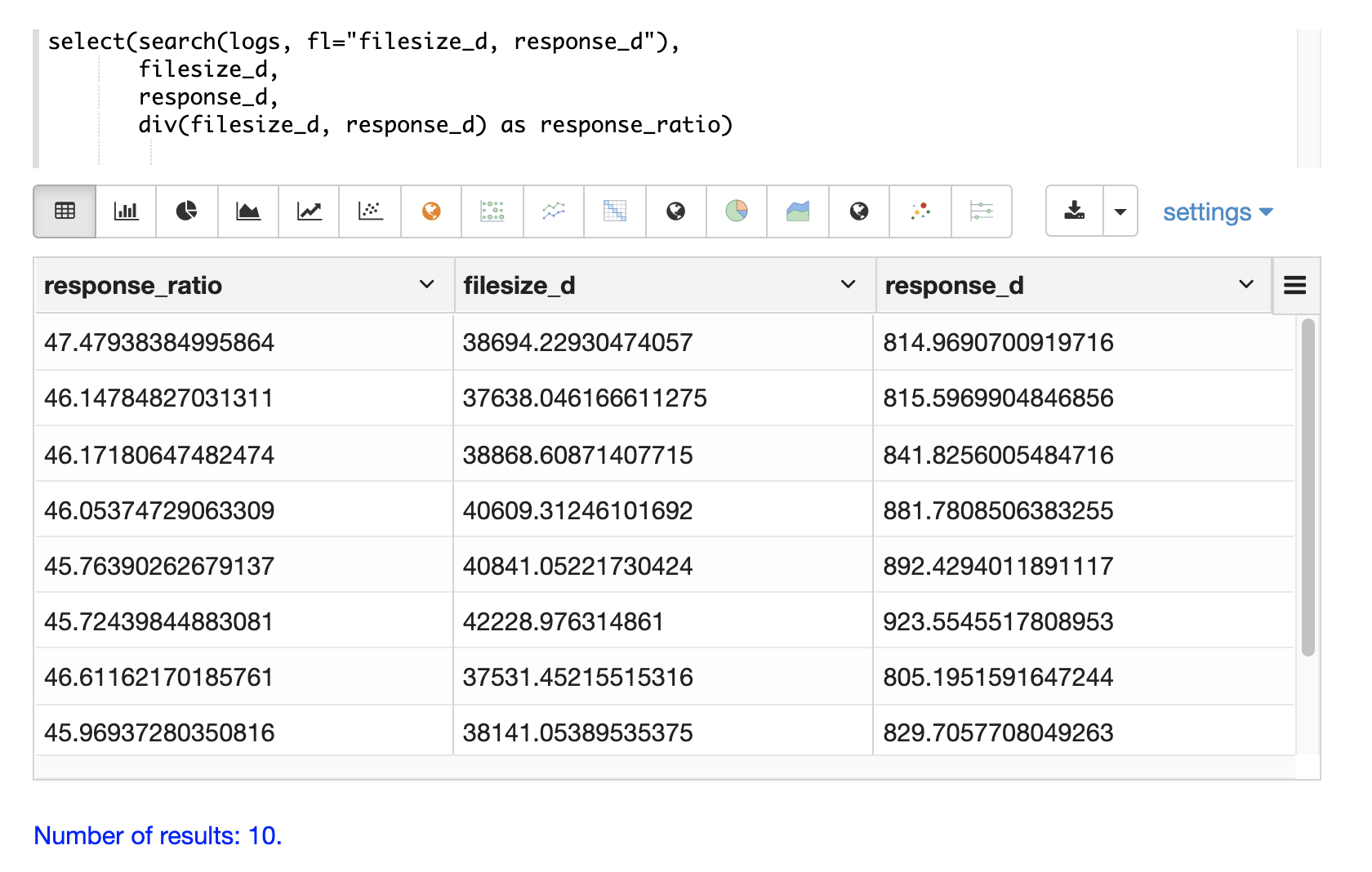
Filtering Tuples
The having function can be used to filter tuples in the stream based on
boolean logic.
In the example below the having function is filtering the output of the
facet function to only emit tuples that have count(*) greater than 20404.

Paging
The record number, added with the recNum function,
can be filtered on to support paging.
In the example below the and function with nested lt and gt functions are
used to select records within a specific record number range:
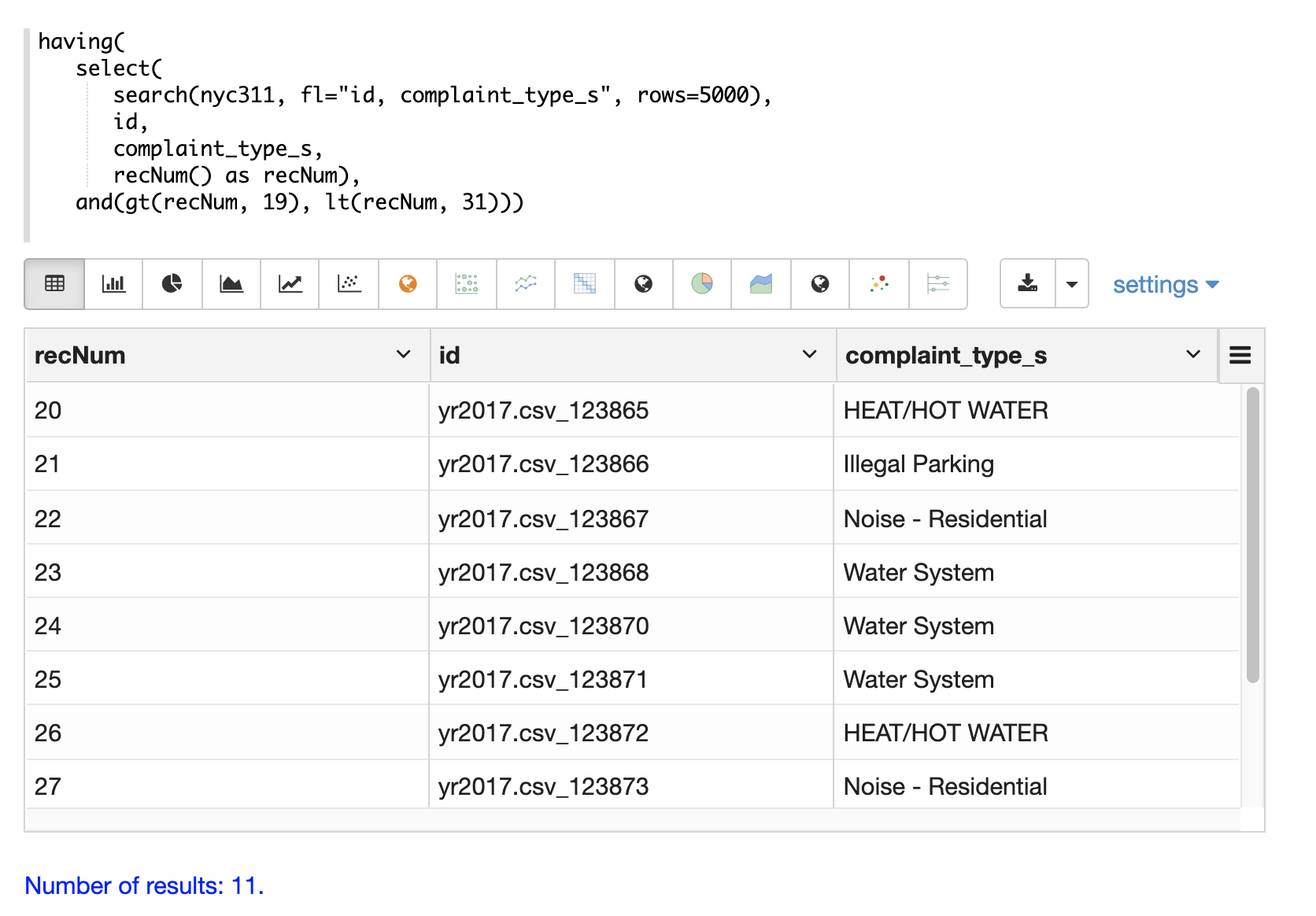
Handling Nulls
The notNull and isNull functions can be used to either replace null values with different values,
or to filter out tuples with null values.
The example below is using the isNull function inside of select function
to replace null values with -1. The if function takes 3 parameters. The first
is a boolean expression, in this case isNull. The if function returns
the second parameter if the boolean function returns true, and the third
parameter if it returns false. In this case isNull is always true because its
checking for a field in the tuples that is not included in the result set.
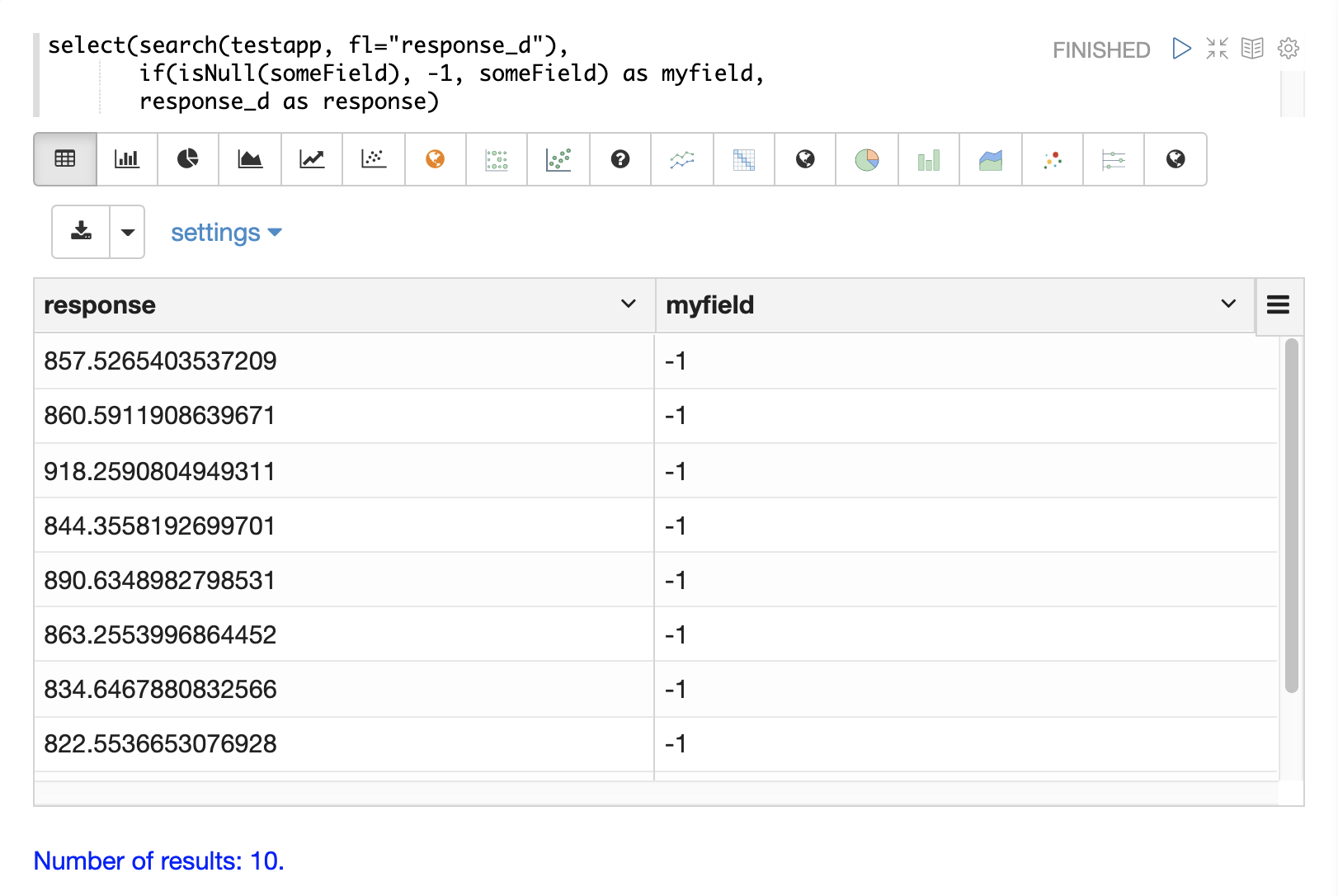
notNull and isNull can also be used with the having function to filter out
tuples with null values.
The example below emits all the documents because it is evaluating isNull for
a field that is not in the result set, which always returns true.
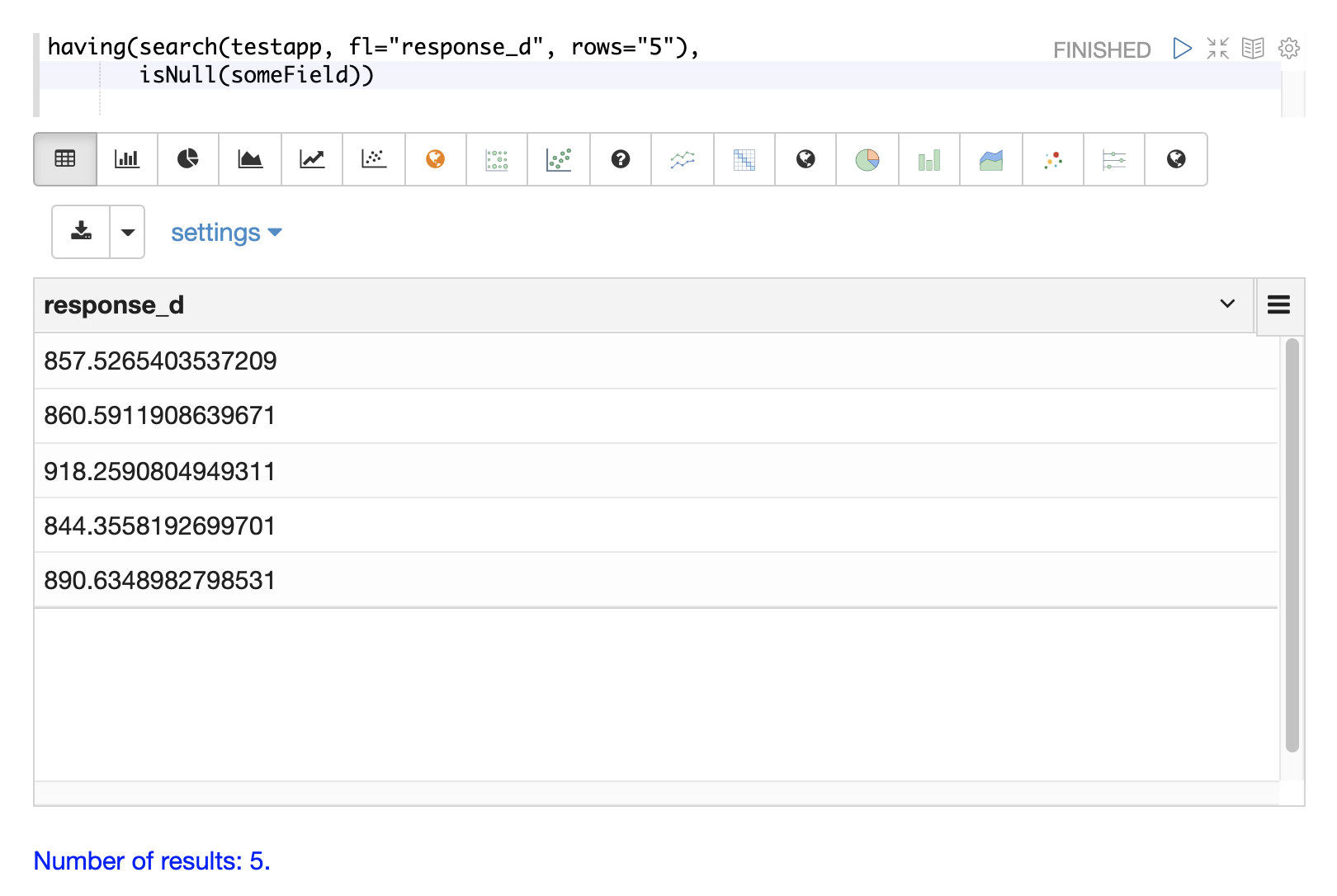
The example below emits zero documents because it is evaluating notNull for
a field that is not in the result set, which always returns false.

Regex Matching and Filtering
The matches function can be used inside of a having function
to test if a field in the record matches a specific
regular expression. This allows for sophisticated regex matching over search results.
The example below uses the matches function to return all records where
the complaint_type_s field ends with Commercial.
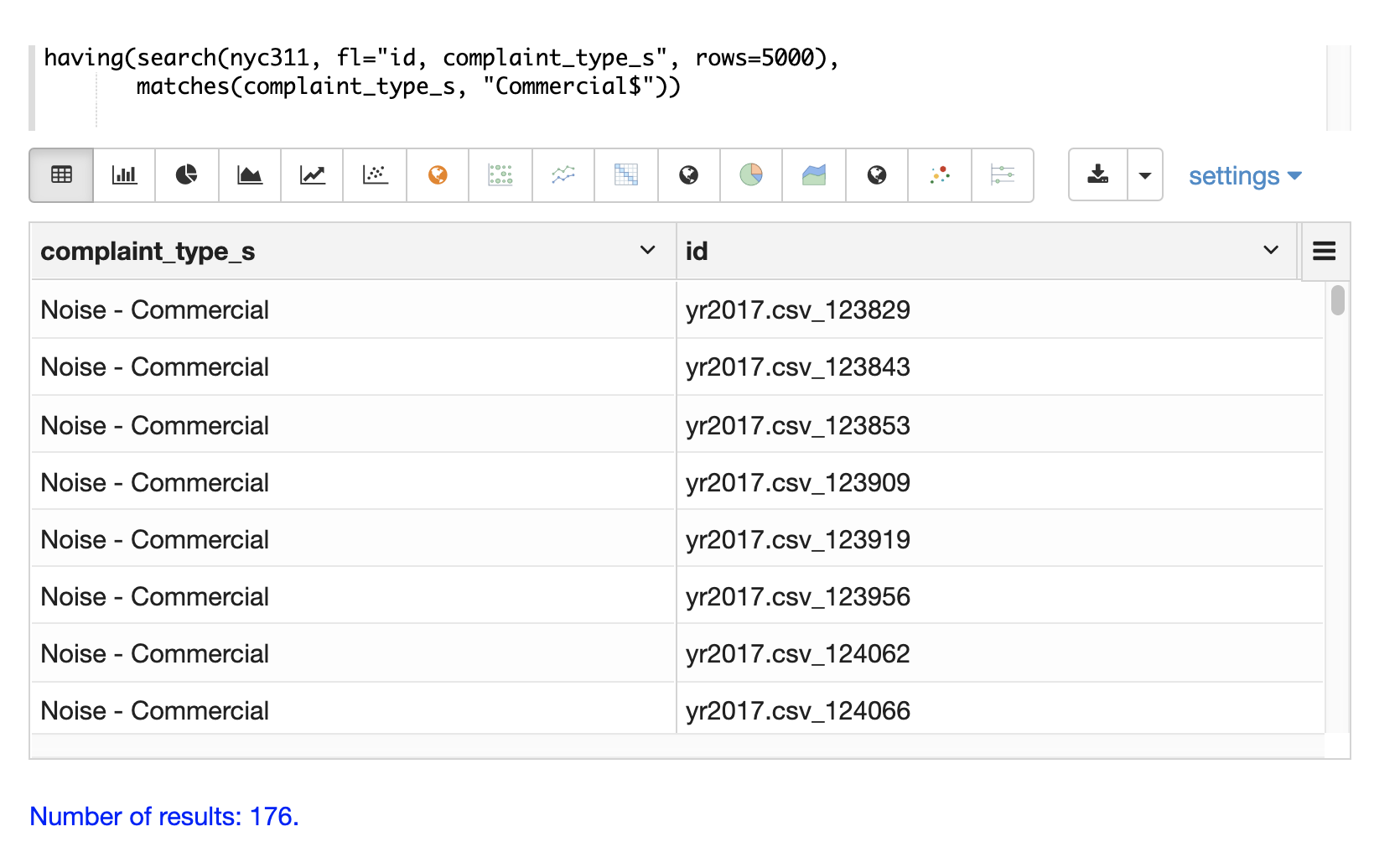
Sorting
The sort and top function can be used to resort a result set in memory. The sort function
sorts and returns the entire result set based on the sort criteria. The top function
can be used to return the top N values in a result set based on the sort criteria.
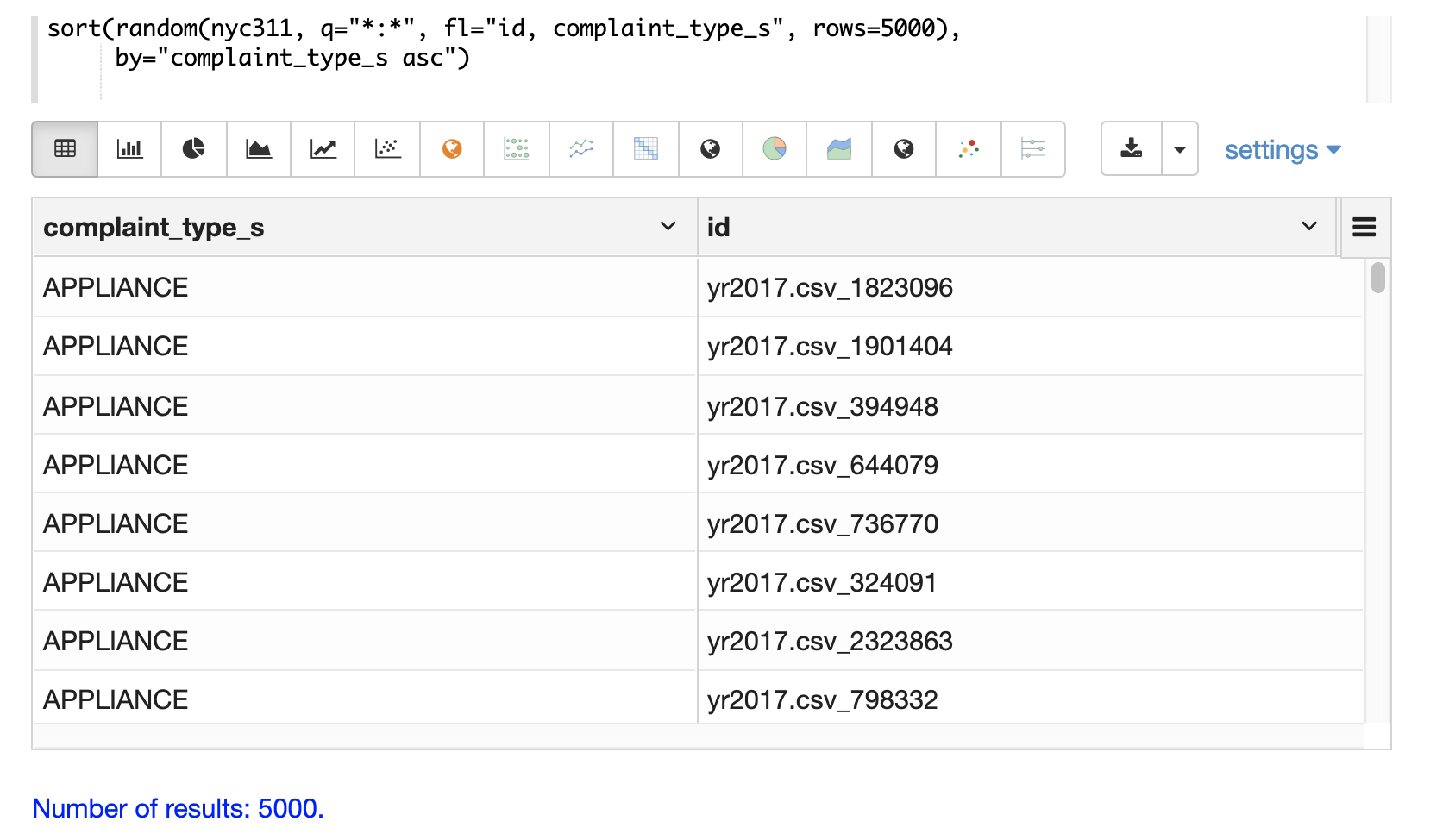
Rollups
The rollup and hashRollup functions can be used to perform aggregations over result sets. This
is different then the facet, facet2D and timeseries aggregation functions which push the aggregations
into the search engine using the JSON facet API.
The rollup function performs map-reduce style rollups, which requires the result stream be sorted by the
the grouping fields. This allows for aggregations over very high cardinality fields. The hashRollup function
performs rollups keeping all buckets in an in-memory hashmap. This requires enough memory to store all the
distinct group by fields in memory, but does not require that the underlying stream be sorted.
The example below shows a visualization of the top 5 complaint types
from a random sample of the nyc311 complaint database. The top
function is used to select the top 5 complaint types based on
the count(*) field output by the hashRollup.
